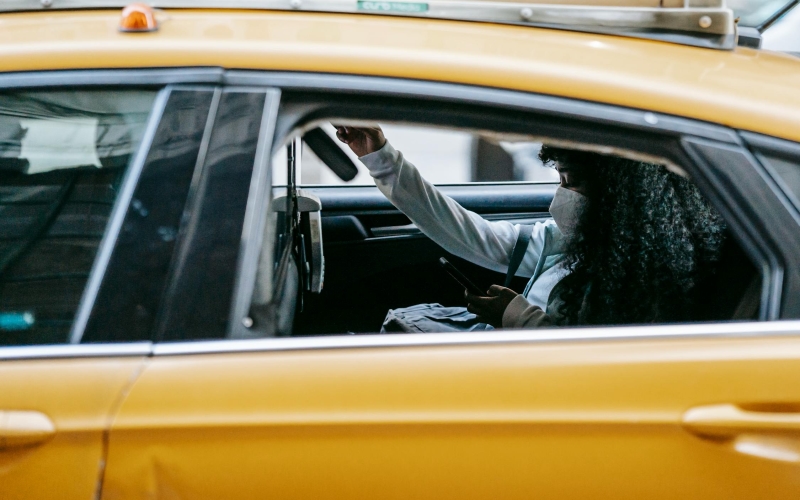In a world where safety concerns loom large, particularly for women traveling alone, the question of trustworthiness in ride-hailing services like Uber becomes paramount. As reports of sexual and physical assaults persist within the realm of rideshare experiences, the very notion of security hangs in the balance.
Despite implementing new safety features, Uber continues to face a relentless wave of assault allegations. These allegations cast doubt on the reliability of Uber as a mode of transportation, particularly for female passengers and drivers alike.
Survivors and advocates are becoming more vocal about holding the company accountable through legal action. The debate over Uber’s trustworthiness has reached a critical juncture. This prompts us to delve deeper into the question: Is Uber truly a trustworthy option for women traveling alone?
The Growing Concern of Sexual Assaults Involving Uber Drivers
Instances of sexual assault involving individuals posing as rideshare drivers have become a mounting concern, shedding light on the vulnerability of passengers using such services.
In a recent incident in Arizona, a 35-year-old man named Jose Quintanilla allegedly sexually assaulted a woman. He purportedly picked her up outside a nightclub in Scottsdale while posing as her Uber driver.
According to court documents released, the woman, whose identity remains undisclosed, had ordered an Uber outside Cake nightclub in Scottsdale during the early hours of February 25. Quintanilla approached her, claiming to be her Uber driver.
Although intoxicated, the woman attempted to confirm her destination by showing Quintanilla her Tempe address on her phone. However, she later noticed her phone missing from the cup holder where she had placed it with the GPS on.
Concerned, she tried to locate landmarks to verify the route, only to find Quintanilla driving in the wrong direction. He then diverted through apartment complexes, eventually stopping to grope and kiss her after jumping over the center console.
Despite her efforts to pretend illness and leave the vehicle, Quintanilla allegedly compelled her back inside. He then reportedly took her to a different location where he coerced her into performing oral sex before ultimately releasing her in a neighborhood in Phoenix.
The victim, distressed and shaken, called for another rideshare, and a legitimate Uber driver took her home safely. Unfortunately, this was not an isolated incident.
Jennifer, sharing her experience, recounted an unsettling encounter with an Uber driver in the Mission area, revealing the disturbing trend of inappropriate behavior and harassment faced by passengers.
Jennifer’s discomfort began when her Uber driver initiated inappropriate conversation and made unwelcome advances upon reaching her destination. Despite her clear refusal, the driver persisted, even returning the next day with her misplaced cell phone. Jennifer promptly reported the incident to the police, although uncertain whether the driver faced repercussions from Uber.
These incidents underscore the urgent need for enhanced safety measures within rideshare platforms. Efforts to improve screening, hiring practices, and prompt removal of drivers exhibiting predatory behavior are imperative to ensure the safety and well-being of passengers.
Uber Sexual Assault Victims Are Fighting a Legal Battle to Seek Justice
Uber sexual assault lawsuits have been initiated by individuals nationwide who have been subjected to sexual assault and misconduct by Uber drivers. These legal actions allege that Uber Technologies, Inc. neglected to enforce adequate safety measures.
It is also alleged that they have neglected to perform thorough background checks, resulting in numerous incidents of sexual assault against passengers.
The prevalence of sexual assault and violence involving Uber drivers has prompted a significant number of individuals to pursue legal recourse against the company.
Reports indicate that thousands of female passengers using the Uber platform have come forward with accounts of rape, sexual assault, and various other forms of sexual violence. The alarming frequency of these incidents underscores the urgency of addressing safety concerns within the ridesharing industry.
According to TorHoerman Law, between 2017 and 2020, Uber’s safety reports documented over 10,000 instances of sexual assault, further highlighting the extent of the problem.
The Uber sexual assault lawsuit aims to address numerous incidents of sexual assault and misconduct by Uber drivers. It emphasizes the company’s alleged failure to implement sufficient safety protocols for passenger protection.
Through litigation, survivors of sexual abuse may be entitled to compensation for the harm they have endured.
The Panel has decided to centralize the Northern District of California lawsuits. This decision comes after recognizing common factual questions shared among these cases. These include Uber’s awareness of sexual assault incidents, background check procedures, driver training, safety measures, and complaint responses.
The aim of consolidating these claims into a single federal court is to streamline pretrial proceedings, prevent inconsistent rulings, and save time and resources. The Panel acknowledged individual and state-specific considerations. It determined that the benefits of centralization outweighed Uber’s concerns about varying state laws and potential third-party claims against drivers.
The centralization of the Uber sexual assault lawsuit underscores a concerted effort to address systemic issues within the ridesharing industry and hold accountable those responsible for failing to ensure passenger safety.
Safety Tips All Women Need to Consider While Taking an Uber Ride
Pretending the Door Is Stuck
Jeeks, a 24-year-old creator based in New Jersey, frequently travels alone and shared some of the safety precautions she takes. One tip is to “always pretend like something got caught in the door” when getting into an Uber. This allows her to check that the back door opens properly and that no child locks are engaged.
Always Appear Busy on the Phone
Pretend to be on the phone for the entire drive, even if no one is actually on the other end of the call. The goal is to give the impression she is speaking with someone else at all times.
Mention Meeting Someone at Your Destination
When pretending to be on a call, always mention that someone is waiting to meet you at your destination. It just gives the impression that there is someone looking for you. This could help in an emergency situation.
Keeping Safety Tools Within Reach
Jeeks also suggests keeping self-defense tools easily accessible. You can carry a purse containing a knife or other stabbing tool that can be accessed quickly if needed for protection.
Checking Driver and Vehicle Details
It’s advised to check that the driver’s name, vehicle, and license plate match what is shown in the app. Look out for any inconsistencies or red flags, such as an intoxicated driver.
Having an Escape Plan
Don’t hesitate to get out of the vehicle if you feel unsafe. Experts recommend coming up with an excuse like receiving an emergency call and requesting to be let out mid-ride. Your primary focus should always be protecting yourself.
FAQs
1. Is there a rideshare app exclusively for females?
A: Just Her is a platform primarily consisting of women drivers who not only offer rides but also aim to foster a sense of community. They connect passengers with reliable drivers, clean vehicles, and cost-effective transportation options, all with a focus on passenger well-being.
2. Where is the safest place for a woman to sit in a taxi?
A: Women are advised to take the back seat behind the driver. Compared to other seating arrangements, this position makes it harder for the driver to cause harm to the passenger. While it may seem inconvenient, it’s advisable to share details of the taxi with someone via text before boarding.
3. Does Uber provide an option for female-only rides?
A: In 2022, Uber introduced the Women Rider Preference feature. This feature enables registered driver-partners who identify as women or non-binary to exclusively receive trip requests from female passengers while they are using the Uber app.
As discussions on safety intensify, especially for women navigating solo journeys, the trustworthiness of Uber emerges as a pivotal inquiry.
Amidst a backdrop of persistent reports detailing assaults, the reliability of Uber as a viable option for solitary female travelers is called into question. This dilemma urges deeper contemplation on the fundamental facets of security and assurance within the domain of ride-hailing services.

